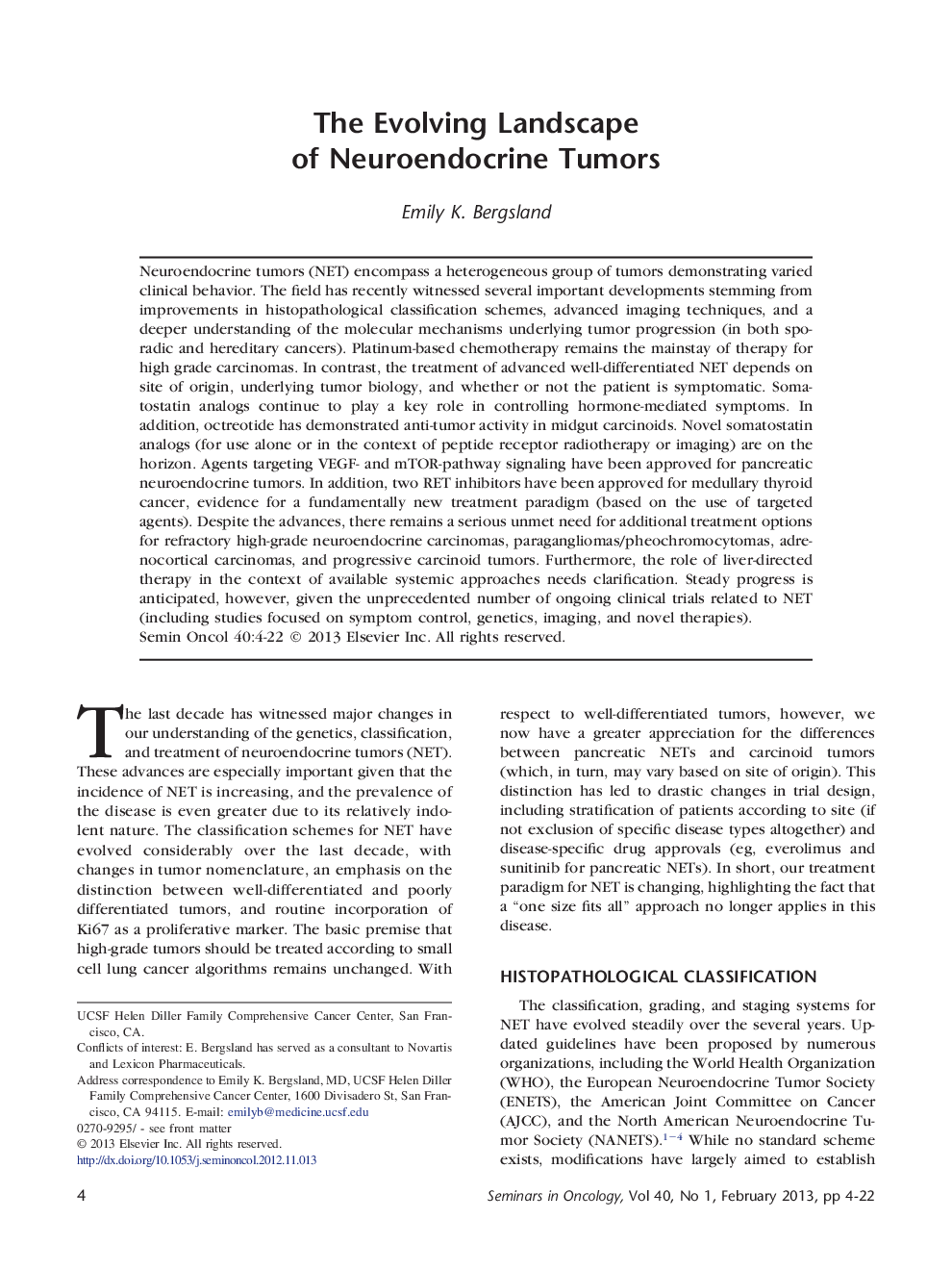| Article ID | Journal | Published Year | Pages | File Type |
|---|---|---|---|---|
| 2162139 | Seminars in Oncology | 2013 | 19 Pages |
Abstract
Neuroendocrine tumors (NET) encompass a heterogeneous group of tumors demonstrating varied clinical behavior. The field has recently witnessed several important developments stemming from improvements in histopathological classification schemes, advanced imaging techniques, and a deeper understanding of the molecular mechanisms underlying tumor progression (in both sporadic and hereditary cancers). Platinum-based chemotherapy remains the mainstay of therapy for high grade carcinomas. In contrast, the treatment of advanced well-differentiated NET depends on site of origin, underlying tumor biology, and whether or not the patient is symptomatic. Somatostatin analogs continue to play a key role in controlling hormone-mediated symptoms. In addition, octreotide has demonstrated anti-tumor activity in midgut carcinoids. Novel somatostatin analogs (for use alone or in the context of peptide receptor radiotherapy or imaging) are on the horizon. Agents targeting VEGF- and mTOR-pathway signaling have been approved for pancreatic neuroendocrine tumors. In addition, two RET inhibitors have been approved for medullary thyroid cancer, evidence for a fundamentally new treatment paradigm (based on the use of targeted agents). Despite the advances, there remains a serious unmet need for additional treatment options for refractory high-grade neuroendocrine carcinomas, paragangliomas/pheochromocytomas, adrenocortical carcinomas, and progressive carcinoid tumors. Furthermore, the role of liver-directed therapy in the context of available systemic approaches needs clarification. Steady progress is anticipated, however, given the unprecedented number of ongoing clinical trials related to NET (including studies focused on symptom control, genetics, imaging, and novel therapies).
Related Topics
Life Sciences
Biochemistry, Genetics and Molecular Biology
Cancer Research
Authors
Emily K. Bergsland,
